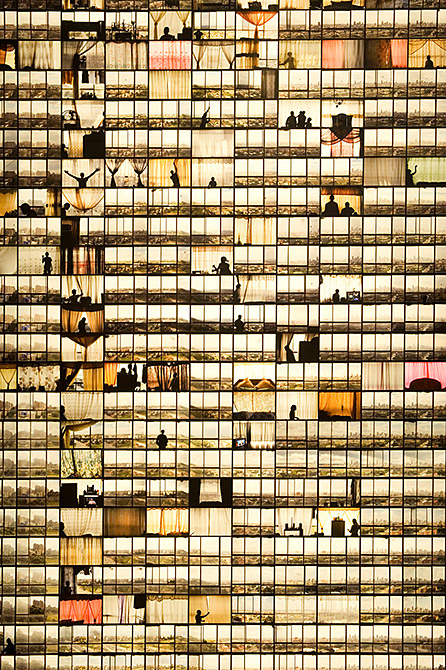Space and object
Gallery 209
The strange, familiar environment of this city is dense with story. The narratives fly at me from all directions.
Teju Cole, Every Day is for the Thief, 2007
"The strange, familiar environment of this city is dense with story. The narratives fly at me from all directions."
Cheick Diallo: Sansa
With the Sansa armchair, Malian designer Cheick Diallo aims to render visible the process behind the production of a simple, robust and modern steel seat.
Diallo decided from the start to produce most of the chair in his home continent, and the process behind the making of Sansa reveals the consequences of this compromise. The designer faced many constraints, acquiring and processing the required materials with great effort, and developing business skills that enabled him to make the armchair a reality. Sansa’s main component is a wire traditionally used in the fishing industry. Diallo is not the first to use this material in innovative ways, and he admits to being inspired by a long tradition of reappropriation of the wire for simple objects. Diallo worked with craftspeople, weaving and knotting nylon thread in the multi-coloured wire, creating a striking chair where a light presence is combined with stability and contemporary flair.
Bodys Isek Kingelez: Étoile Rouge Congolaise
Étoile Rouge Congolaise was one of the first of many futuristic architectural models by the Congolese artist Bodys Isek Kingelez.
The incredibly detailed and colourful work consists mainly of paper, cardboard, styrofoam, used packaging and a variety of other found materials. The red star is not only a part of the futuristic building’s designation, but also decorates the roof. Representing the artist’s socialist ideals for society, Kingelez’s urban landscapes are a rejection of the domesticated western city and the featureless “airport” and souvenir art that can be found at tourist markets and in airport shops. Simultaneously, his model cities are a reaction to excessive construction projects, which in many places – financed by the World Bank and ignoring the needs of the population – forebode a ruinous existence even before their completion. Kingelez sees his models as prototypes for a community-based urban life in a future Africa. “I want my art to foster the revitalization of a community and ultimately lead to the creation of a new world,” the artist says. “The joys of our world are, after all, dependent on the people living in it. I built these cities to be full of peace, justice and freedom. They should function like little secular states with their own political structures, without police and without military.”
Mikhael Subotzky, Patrick Waterhouse: Ponte City
Mikhael Subotzky’s and Patrick Waterhouse’s joint project documents the life and atmospheres of the Ponte City skyscraper in Johannesburg.
Created between 2008 and 2010, the photographers have generated an intimate and powerful portrait of Africa’s tallest apartment building, a circular 54-storey building that rises up to 173 metres. Built in 1975, Ponte City was once one of Johannesburg’s most fashionable buildings, but has since the end of the apartheid decayed and changed. Many of its windows are broken and the courtyard was until recently used as a large-scale garbage dump. Despite a high crime rate and failed renovation plans, Ponte City is still lived in. Its neighbourhood, its footprint and aspirations form the basis for Subotzky’s and Waterhouse’s long-term project. Over two years, they took photos of every window, apartment door and TV set in the building. Subsequently, they pieced together six hundred pictures in three different lightboxes, maintaining the exact order of the different storeys and apartment locations. A mosaic-like snapshot emerged, combining internal, external and imaginary perspectives on the structure and residents of this building that, like no other, represents the people and the history of South Africa.


